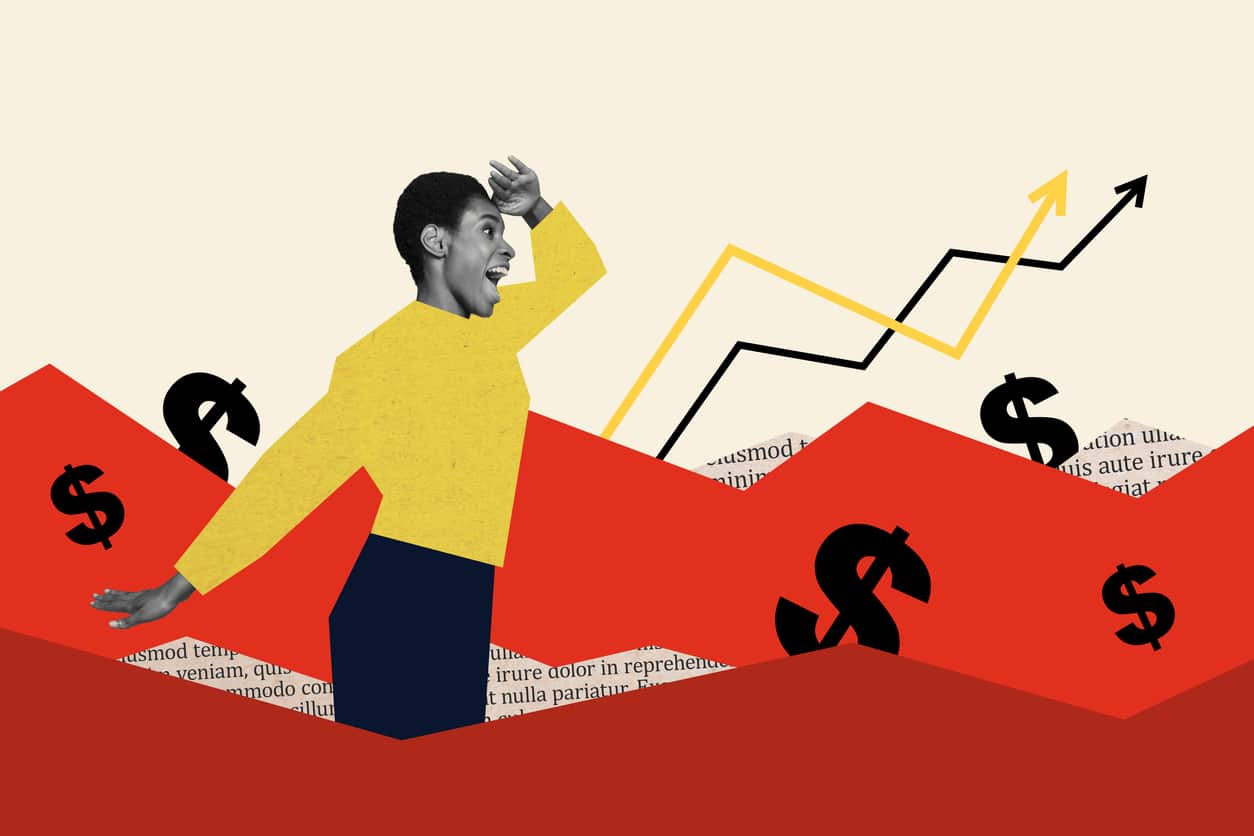The stock market is a living, breathing thing. Sometimes they’re roaring with optimism in moments of triumph (bull markets), other times they shudder in the face of uncertainty (bear markets). The truth is: market ups and downs are not only normal, they’re essential to long-term growth.
So how do you navigate the chaos without losing your nerve (or your nest egg)? It starts with understanding the cycle.
The Bull and the Bear: A Quick Refresher
- Bull markets happen when prices are climbing and investor confidence is high. These periods often follow economic growth, strong employment numbers, rising corporate earnings, and positive consumer sentiment. Bulls can run for years. Just look at the historic bull market from 2009 to 2020, which lasted over a decade.
- Bear markets occur when prices fall 20% or more from recent highs, often triggered by recession fears, tightening monetary policy, or global uncertainty. It’s not just a bad week or month. It’s a sustained period of pessimism. Bears can feel scary, but they’re also a natural and temporary part of the cycle.
Why Markets Flip-Flop
Markets are forward-looking and aren’t just reacting to hard numbers. It’s driven based on what investors think will happen next. One headline can shift the tide.
This is why good economic news can sometimes lead to a dip (e.g., if investors think it will trigger rate hikes), and bad news can lead to a bounce (if it suggests easing policies are ahead). A great jobs report might fuel optimism; a surprise rate hike could send stocks diving.
Other factors include:
- Investor sentiment (often driven by media headlines)
- Earnings surprises
- Federal Reserve policy changes
- Global events and supply chain disruptions
Your Market Survival Kit: How to Stay Steady
Rather than trying to time the market, which even professionals struggle with successful investors focus on strategy and discipline. Here’s how to navigate the waves.
- Zoom Out and Stay Calm: Markets trend upward over time, even if they take the scenic route. Historically, bull markets last longer than bears, and recoveries often happen faster than expected.
- Diversify, Diversify, Diversify: A balanced portfolio can cushion the blow during downturns and seize opportunities when markets rebound. A well-diversified portfolio balances risk across asset classes, industries, and regions. That way, when one area falters, another may rise.
- Avoid Emotional Trading: Panic selling in a bear market is one of the fastest ways to lock in losses. It’s tempting to sell when the market drops but doing so can lock in losses. Likewise, jumping in during market peaks can backfire. Create an investment plan and stick to it, especially in turbulent times.
- Focus on Your Time Horizon: If your strategy is sound, short-term noise shouldn’t derail your long-term goals. Are you investing for retirement 20 years from now? Then a bear market today is likely just a bump in the road. If you’re closer to needing your money, consider adjusting your asset allocation accordingly.
- Leverage Financial Apps: There are many financial apps designed to help everyday investors manage their portfolios, track market trends, and make informed decisions. If you’re a Slavic401k participant – make sure to download the brand new Slavic401k mobile app at the Google Play or Apple App Store.
- Seek Professional Advice: If you’re unsure about your investment choices, consider consulting a financial advisor. They can provide personalized advice based on your financial situation and goals.
Markets Move, But So Should You
Market swings may feel dramatic, but they’re part of a healthy financial ecosystem. You can’t control the market, but you can control your reaction to it. From bulls to bears and back again, your best strategy is to stay informed, stay disciplined, and stay the course.





